#chumash
Explore tagged Tumblr posts
Photo
Another great link to find out whose land you’re on is https://native-land.ca - it’s really well-designed and provides links to more information on nations, languages, and treaties outlined on the map.
I’m currently living on Ramaytush/Ohlone land and grew up on Tatavium, Tongva, and Chumash land. These people are still here and are still fighting for self-sovereignty within their own homeland. There are many Indigenous organizations and projects you can help support - I know that Sogorea Te’ Land Trust (https://sogoreate-landtrust.org) is doing incredible work near me in the Bay Area (Ohlone/Villages of Lisjan land) for land back/rematriation initiatives and cultural revitalization.
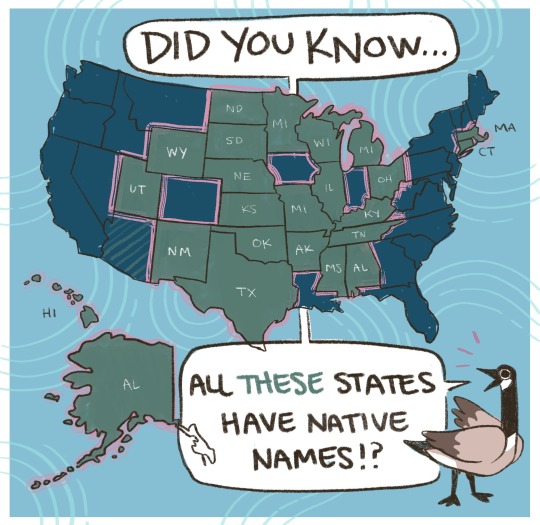
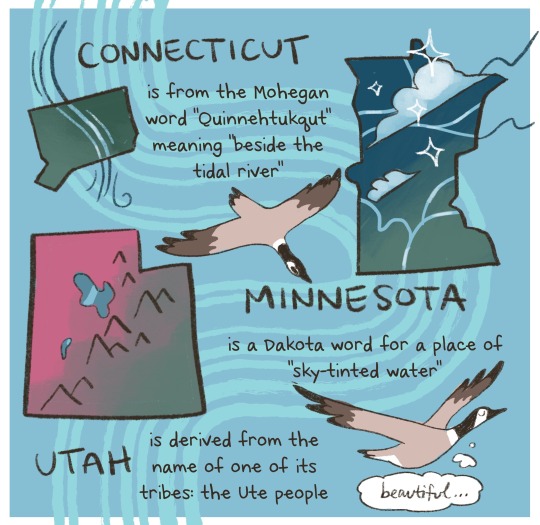
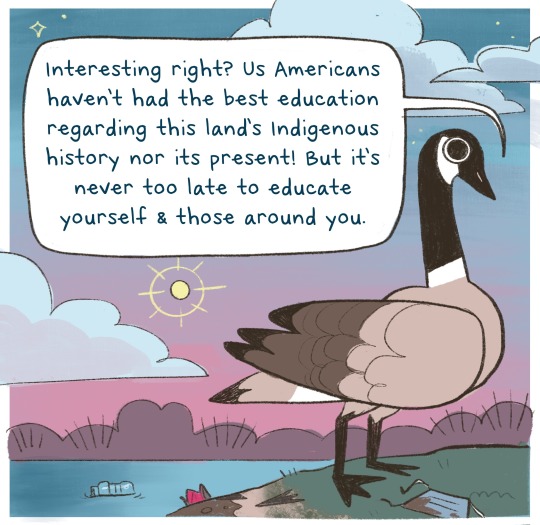


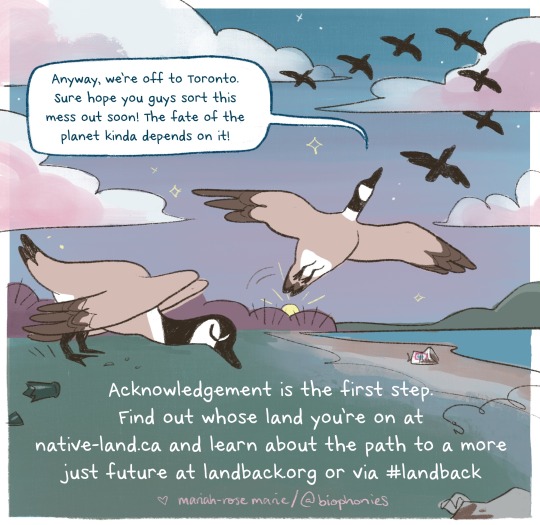
ah, i’m so bad at posting here. acknowledging this Day of Mourning from the lands of Kiikaapoi, Peoria, Potawatomi, Myaamia & Ochethi Sakowin people, aka Chicago, derived from a native word for garlic (mmm…) which is really suitable for me because I live here now 🌱🧄✨
whose.land are you on? talk about it over dinner this weekend with your fam & what it means to give the #landback. considering everything, listening & learning from indigenous people is the least you can do.
#indigenous#landback#land back#ohlone#ramaytush#tetavium#tongva#chumash#rematriation#turtle island#i realize it’s not november yet but i don’t want to wait to reblog#indigenous territory#indigenous land#indigenous sovereignty#comic#art#borders#sogorea te’ land trust#villages of lisjan#lisjan
96K notes
·
View notes
Text

Kulupeč
6 notes
·
View notes
Text
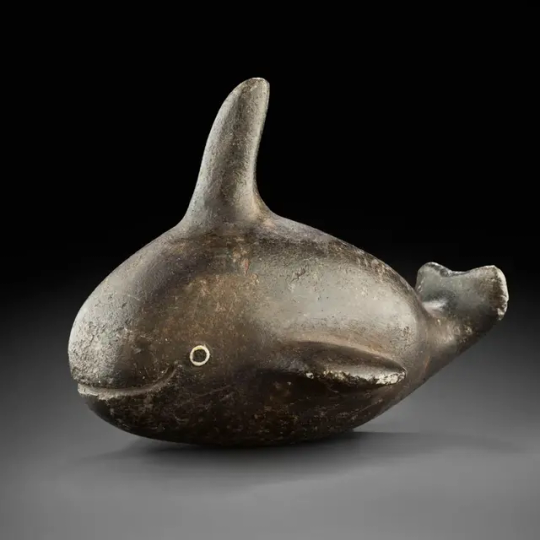
Steatite whale effigy, Chumash people, southern California coast, circa 1200-1600
from The Montreal Museum of Fine Arts
8K notes
·
View notes
Text



AMBER MORNINGSTAR, 2019 | NAOMI, 2017 | JULIA, 2018
by Cara Romero as part of her First American Girls series
#Cara Romero#Chemehuevi#Amber Morningstar Byars#Chahta#Choctaw#Naomi#Chumash#Julia Romero#Cochiti#San Ildefonso#Photography#Indigenous Art#Contemporary Art
861 notes
·
View notes
Text
Look at that. Gorgeous.
Everyone shut up and look at this carving of a whale from the 1200-600 CE Chumash culture
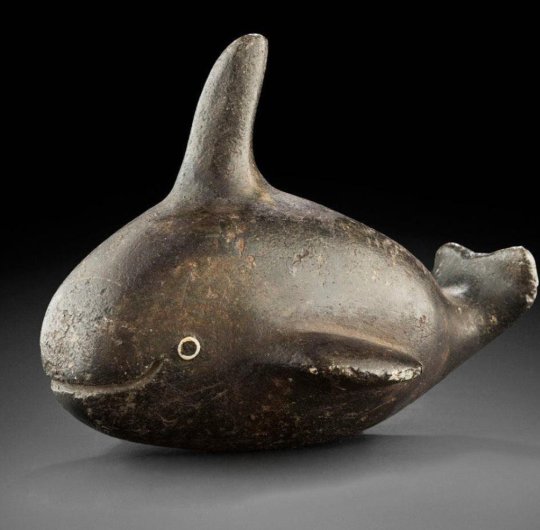
83K notes
·
View notes
Text
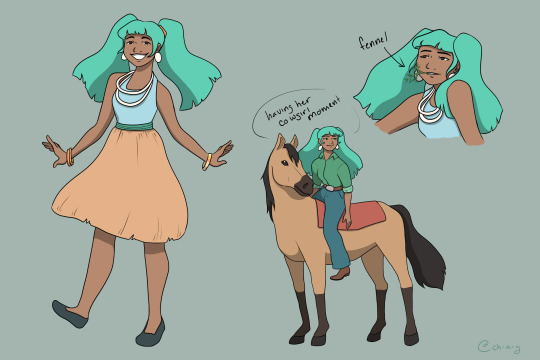
Chumash Miku lets goooo
268 notes
·
View notes
Text

Soapstone with shell inlay carving of a whale effigy. California, United States, Chumash culture, 1200-1600 CE
#native american#indigenous#american indian#munakatasennin#reddit#artefactporn#indigineous people#soapstone#shell inlay#carving#whale#california#united states#chumash#chumash culture#1200-1600 ce#art#unknown artist
54 notes
·
View notes
Text
BREAKING NEWS: NOAA releases proposal for national marine sanctuary
youtube
Following input from the public, stakeholders, Indigenous communities, scientists, and federal and state agencies, today NOAA released its proposal to designate Chumash Heritage National Marine Sanctuary, a 5,617-square-mile area offshore of San Luis Obispo and Santa Barbara counties in central California.
NOAA invites the public to comment on the proposed sanctuary designation documents of the proposed Chumash Heritage National Marine Sanctuary by October 25, 2023.
#EarthIsBlue#Chumash#NOAA#California#Conservation#BREAKINGNEWS#national marine sanctuary#science#nature#ocean#News#breaking news#latest news#Youtube
337 notes
·
View notes
Text

A Chumash canoe illustrated by W. Langdon Kihn. The Chumash people traditionally seal their canoes with tar from La Brea.
13 notes
·
View notes
Note
anyone got any recommendations for an Orthodox-leaning chumash? I'd like something with commentary that I can read on shabbos afternoon.
.
11 notes
·
View notes
Text
Shannen's Native American Descent
We all know Shannen Doherty was of Irish descent through the paternal side of her family.
The Doherty / O’Doherty family is an Irish clan based in County Donegal. The O’Dohertys are named after Dochartach (c. 10th century), a member of the Cenél Conaill dynasty which in medieval Irish genealogy traced itself to Niall of the Nine Hostages. The O’Doherty clan and family name is one of the most ancient in Europe. The clan traces its pedigree through history, pre-history, and mythology to 2BC. (Source)

Shannen and her dad, John Thomas Doherty, in Ireland ca. 1996/97.
Shannen was also from English and Scottish descent through her mother Rosa Elizabeth née Wright. The red-haired Southern belle also has Native American ancestry, most concretley the Chumash people (Source), and thus has Shannen (Source).
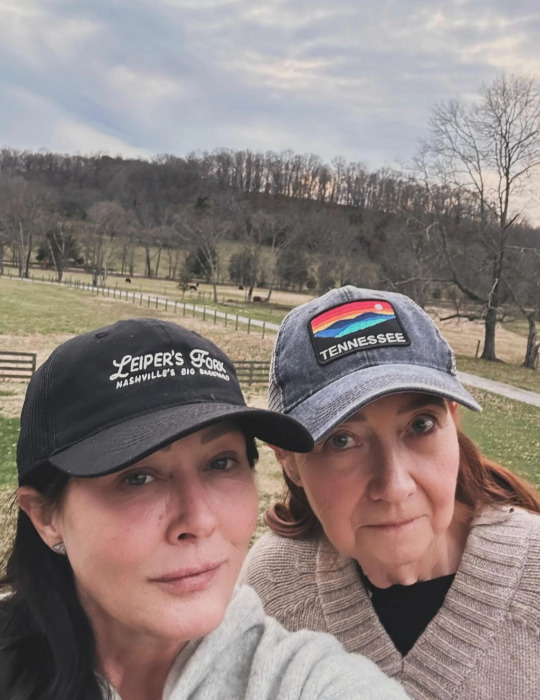
Shannen and her mum spending time in nature, ca.2024.
Shannen explained that she wasn't able to be with her dad when he passed away on the 4th of November of 2010. Her best friend Chris Cortazzo told her to spend some quality time with her mother and him at his ranch in Tennesse, which is surrounded by Native American ground. When she was there suddenly the wind shaked the plants and trees and she felt her father’s arms go around her and say “It’s ok baby, I love you. I’m here" (Source) (Source).
Her mother Rosa said that one of her great-great-grandmothers (she doesn't know the grade) was forced to move in the called "Trail of Tears", the forced displacement of approximately 60,000 people of the "Five Civilized Tribes" [Cherokee, Chickasaw, Choctaw, Muscogee (Creek), and Seminoles] between 1830 and 1850, and the additional thousands of Native Americans within that were ethnically cleansed by the United States government (Wiki). Furthermore, she said her ancestor was from the Chumash people and was forced to move from Mississipi to Oklahoma (Source).
Rosa also said about Shannen's Native American's heritage:
"The whole Indian heritage to Shannen was very, very important ... Shannen swore when she bought this property [a ranch in Malibu to live with her mum, her friends, and to do a shelter for horses]… she says, I just feel it. She says, I know that this is where I'm supposed to be. And she just felt that whole Indian."
Also she was proud of having directed "Charmed"'s episode "The Good, The Bad and The Cursed" that features a storyline involving American's First Nations people's and Native actors Kimberly Guerrero (from Colville and Salish-Kootenai native peoples from Alaska) and Michael Greyeyes (Nêhiyaw (Plains Cree) from Muskeg Lake Cree Nation in Saskatchewan, Canada).

Shannen Doherty (R) with First Nations' actors Kimberley Guerrero and Michael Greyeyes.
The Chumash are a Native American people of the central and southern coastal regions of California (Wiki), in portions of what is now Kern, San Luis Obispo, Santa Barbara, Ventura and Los Angeles counties, extending from Morro Bay in the north to Malibu in the south to Mt Pinos in the east. Their territory includes three of the Channel Islands: Santa Cruz, Santa Rosa, and San Miguel; the smaller island of Anacapa was likely inhabited seasonally due to the lack of a consistent water source.
Modern place names with Chumash origins include Malibu, Nipomo, Lompoc, Ojai, Pismo Beach, Point Mugu, Port Hueneme, Piru, Lake Castaic, Saticoy, Simi Valley and Somis. Archaeological research demonstrates that the Chumash people have deep roots in the Santa Barbara Channel area and lived along the southern California coast for millennia.
The Chumash lived in over 150 independent villages, speaking variations of the same language. Much of their culture consisted of basketry, bead manufacturing and trading, cuisine of local abalone and clam, herbalism which consisted of using local herbs to produce teas and medical reliefs, rock art, and the scorpion tree. The scorpion tree was significant to the Chumash as shown in its arborglyph: a carving depicting a six-legged creature with a headdress including a crown and two spheres. The shamans participated in the carving which was used in observations of the stars and in part of the Chumash calendar. The Chumash resided between the Santa Ynez Mountains and the California coasts where a bounty of resources could be found. The tribe lived in an area of three environments: the interior, the coast, and the Northern Channel Islands. Some researchers believe that the Chumash may have been visited by Polynesians between AD 400 and 800, nearly 1,000 years before Christopher Columbus reached the Americas.

Chumash Family by American sculptor George S. Stuart
The maritime explorer Juan Cabrillo was the first European to make contact with the coastal Alta Californian tribes in the year 1542. Spain claimed what is now California from that time forward, but did not return to settle until 1769, when the first Spanish soldiers and missionaries arrived with the double purpose of Christianizing the Native Americans and facilitating Spanish colonization. The Chumash people moved from their villages to the Franciscan missions between 1772 and 1817.
Mexico seized control of the missions in 1834. Tribespeople either fled into the interior, attempted farming for themselves and were driven off the land, or were enslaved by the new administrators. After 1849 most Chumash land was lost due to theft by Americans and a declining population, due to the effects of violence and disease. The remaining Chumash began to lose their cohesive identity. In 1855, a small piece of land (120 acres) was set aside for just over 100 remaining Chumash Indians near Santa Ynez mission. This land ultimately became the only Chumash reservation, although Chumash individuals and families also continued to live throughout their former territory in southern California.
No native Chumash speak their own language since Mary Yee, the last Barbareño speaker, died in 1965. Today, the Chumash are estimated to have a population of 5,000 members.
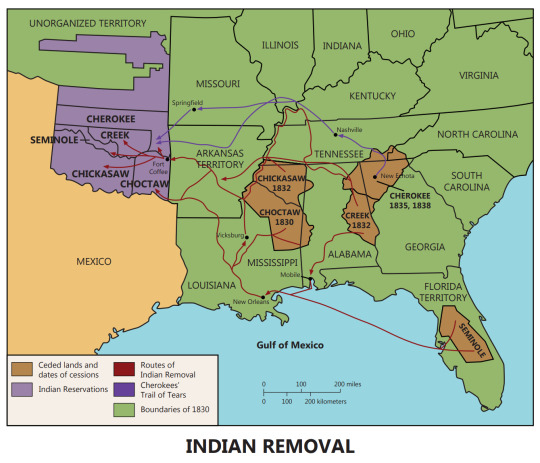
Map of the Trail of Tears
Chumash worldview is centered on the belief "that considers all things to be, in varying measure, alive, intelligent, dangerous, and sacred." "They assume that the universe with its three, or in some versions five, layers has always been here."
Human beings occupy the Middle Region, which rests upon two giant snakes. Chronological time is unimportant, though the past is divided into two sections: the universal flood that caused the First People to become the natural world and, thereafter the creation of human beings, the arrival of the Europeans, and the devastating consequences that followed."
The middle region (sometimes referred to as 'antap), where humans and spirits of this world live and where shamans could travel in vision quests, is interconnected with the lower world (C'oyinahsup) through the springs and marsh areas and is connected to the upper world through the mountains. In the lower world live snakes, frogs, salamanders. The world trembles or has earthquakes when the snakes which support the world writhe.
Water creatures are also in contact with the powers of the lower world and "were often depicted in rock art perhaps to bring more water to the Chumash or to appease underworld spirits' at times of hunger or disease." Itiashap is the home of the First People. Alapay is the upper world in Chumash cosmology where the "sky people" lived, who play an important role in the health of the people. Principle figures of the sky world include the Sun, the Moon, Lizard, Sky Coyote, and Eagle. The Sun is the source of life and is also "a source of disease and death." The Sky Coyote, also known as the Great Coyote of the Sky or Shnilemun, is considered to be a protector and according to Inseño Chumash lore, “looks out for the welfare of all in the world below him”. During the creation of mankind, the Sky Coyote was present among the other important cosmological figures. The Eagle, also known as Slo’w, is the force that maintains momentum and order among the other stars so that they do not fall down on and destroy earth.

Chumash pictographs.
The Chumash cosmology is also centered around astronomy. Rock art and arborglyphs that have been found within Chumash sites are thought to have depicted Polaris (the North Star) and Ursa Major (the Big Dipper). These two astrological entities were paramount to the Chumash belief system as well as their perception of time. It is believed that the Chumash used these constellations to determine what time of the year it was depending on the position of Ursa Major around Polaris.
***
I love that Shannen showed her respect to her ancestry in some "Charmed" episodes, like in 2x10 "Heartbreak City" (click to see if bigger):

Charmed 3x01 "The Honeymoon is Over" (click to see bigger):

And the already mentioned 3x14 "The Good, The Bad and The Cursed" (click to see bigger). Her love for horses also comes from that connection:

#shannen doherty#ancestry#irish ancestry#native american ancestry#first nations ancestry#chumash#chumash people#family#trail of tears#heritage#indian heritage#charmed 3x14#charmed 2x10#charmed 3x01#charmed#director#shannen doherty director#shannen director#1990s shannen doherty#2000s shannen doherty#2020s shannen doherty#rosa doherty#malibu#chris cortazzo#tennesse
26 notes
·
View notes
Text
any friends who are living in California--
The Northern Chumash Tribal Council is having an event tomorrow to celebrate the public comment period for Chumash Heritage National Marine Sanctuary, September 20th at 11am-3pm at Morro Rock Jetty Beach, on the south side of Morro Rock at the end of Coleman Rd.
This rally is a great way to learn more about the Chumash Heritage National Marine Sanctuary, which is a really important initiative by the Chumash peoples to preserve the coastal ecosystems as well as protect important sacred sites. If you're not able to go, check out the website and sign up for the mailing list.
219 notes
·
View notes
Text

The Toledo Bible, Toledo 1276/7; Parma, Biblioteca Palatina, Ms. Parm. 2668, fol. 8r (photo Lucio Rossi, Foto R.C.R. Parma).
103 notes
·
View notes
Text
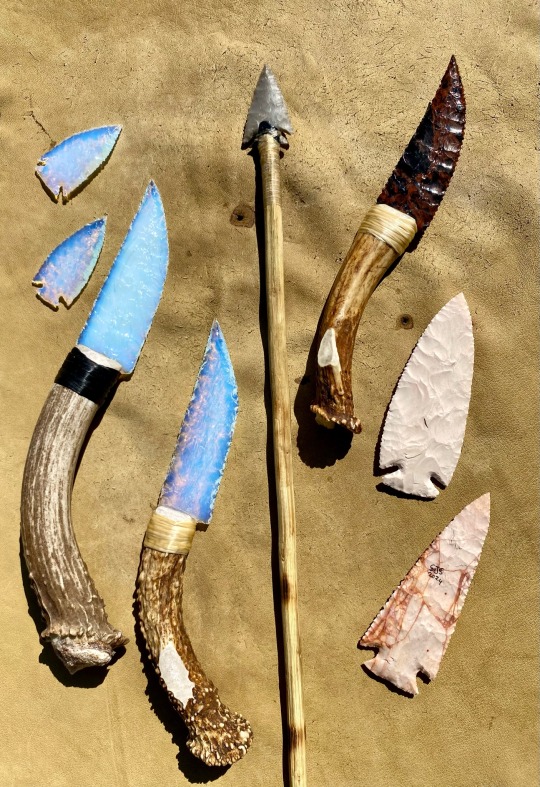
Kulupeč means “I chip flint”
103 notes
·
View notes
Text
to my two spirit kin - You are sacred. You are the greatest gift from your ancestors. You are from the Earth mother and you are a blessed child. Kaqinaš for your love and your spirit for your community. Thank you for your being. Thank you for your gifts and for your dreams. Your future is bright. Kaqinaš Creator for you. - Jayden (Chumash/Cahuilla/Ohlone)
#two spirit#queer poems#transmasc#t4t yearning#gay baka#mine#chumash#cahuilla#ohlone#queer futures#Indigenous futures#Indigiqueer
9 notes
·
View notes
